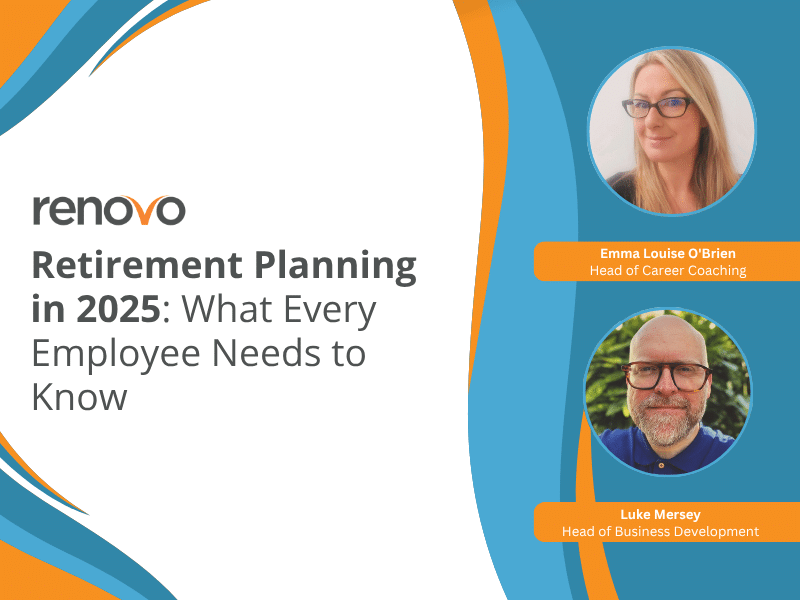
What is Body Language?
Body Language is everything you don’t say, also known as non-verbal communication. Albert Mehrabian, a researcher of body language who first broke down the components of a face-to-face conversation, found that communication is 55% nonverbal, 38% vocal, and only 7% words.
Is Body Language important in a Job Interview?
As well as preparing for potential questions and making sure you are organised, your body language is an important factor to consider when preparing for virtual or in-person interactions or interview. Your body language is the first impression recruiters and interviewers will have of you and could leave a poor impression if not managed effectively.
So, what’s your body language saying about you? Here are 7 key physical behaviours to help you think about your body language as part of your interview preparation.
1.Smile
Your smile goes a long way in creating a first impression and communicates warmth, approachability and enthusiasm. Try and smile naturally as you meet your interviewers and throughout the interview at appropriate moments. Try and avoid forcing a smile the whole time and this can come across as insincere. Let your smile and expressions reflect your answers, questions and tone.
2.Posture
Keeping good posture conveys engagement and confidence. During your interview, make sure you’re sitting upright with your shoulders relaxed. Slouching can make you appear disinterested, while leaning towards the interviewer at appropriate times can signal attention. Be conscious that you’re not folding your arms during the interview, as this can come across as defensive.
3.Handshake
The handshake is often your first physical interaction with an interviewer and so you want to make sure it sets the tone. Make sure your handshake is firm but not overpowering and ensure you maintain eye contact as this conveys professionalism and confidence. It may be that some people prefer not to shake hands, particularly after the COVID pandemic, so if a handshake isn’t offered, meet instead with a warm smile and a respectful appropriate greeting.
4.Focus
You need to maintain focus in your interview so that you’re fully present throughout. Fidgeting, glancing around or shifting in your seat are signs that you’re not completely engaged with the interviewer and may be distracting for them too. Particularly on remote interviews where the focus is even more predominantly on you, even small distractions can be noticeable. Make sure your phone or other tech is away from you and avoid time checking; even subtle glances can indicate you’re not taking the interview seriously.
5.Keep Calm
Keep measured and calm and match your physical gestures to this. Opt for open and inviting movements rather than overly assertive ones. If you are being interviewed by a panel, make sure you engage with each person equally rather than focussing on one person in case this is taken as hostile.
6.Mirroring
This is the practice of reflecting another person’s posture or gestures, for example, if your interviewer leans forward, you do too. This can create a sense of familiarity and rapport. This can be difficult to do naturally, so you might want to practice with a friend or family-member beforehand. Avoid copying too obviously or too much as this will appear unnatural and may make the interviewer uncomfortable.
7.Eye contact
Maintaining eye contact is one of the most effective ways to convey confidence and shows that you are interested and engaged with what the interview is saying. With that, you need to strike a good balance; make sure you’re not staring as this may be seen as intense, but minimal eye contact may make the interviewer feel you are avoiding questions. Try not to focus on things around the room, no matter how distracting they are!
Final thoughts
There are no hard rules to follow when it comes to body language, but it’s important you are aware of how you communicate non-verbally. It might be a good idea to consider recording yourself doing a mock interview on a platform like MS Teams or Zoom, you can then analyse your body language in advance of any interviews and adjust accordingly.

When the notion of redundancy comes up, the focus often falls in the first instance upon the individuals impacted by the process. Specifically, how they’ll manage the emotional impact, the short-term financial implications and the importance of helping support them to move on in their career. However, behind the scenes, the employer who has been tasked with making the difficult decisions is also faced with significant challenges to manage. The decision to make workforce changes, is not simply an operational or financial decision but one that can have serious emotional and reputational implications as well.
Whilst much of the conversation around redundancy naturally centres on employees, the employer also benefits from effective support. With competition in the job market higher than ever and with job seekers faced with increasingly complex challenges, investing in outplacement support, is a highly effective and strategic solution for businesses, regardless of their size or sector. Not only do they help employees move on in their careers more quickly and easily, they also offer long-term benefits to the organisation as well.
Here are a few examples of how organisations benefit from Outplacement Support:
Protecting Brand Reputation and Safeguarding Against Legal Risks
With redundancy may come legal and reputational challenges and risks for a business to consider. Employees who are impacted may feel they have been dealt with unfairly which can lead to grievances and legal challenges. As a result, this can also cause short term harm to an organisation’s brand reputation. Offering employees personalised and practical outplacement support, demonstrates that the organisation understands and takes its duty of care seriously.
Outplacement can also go a long way to showing that a company recognises its responsibilities as an employer, especially during challenging times. More often than not, simply the fact that support is being offered can alleviate some of the emotional stress straight away, whilst helping to minimise the resentment and negativity which is often raised on social media or in some cases, through formal disputes.
Demonstrating Commitment to Company Values
How a company manages change and the challenges which come with difficult decision making such as redundancy, says a lot about its commitment to its values and the strength and effectiveness of its leadership. Offering a service such as outplacement support shows current employees, as well as those who may later join the business, that your organisation is supportive and forward-thinking.
For potential hires, it suggests a people-first culture where individuals are respected, even when their time with the business has come to an end. For clients, it suggests a well-managed business in touch with the modern working world and with a focus on looking after its people. For ‘Survivors’ or those employees who remain with the business, it helps build resilience and can reinforce trust in leadership. This all contributes to a stronger employer brand, which can be crucial in a competitive market where the battle for talent is so important.
Maintaining Morale and Productivity
The impact of redundancy isn’t only felt by those employees who end up leaving; it’s not uncommon for those staff who remain with the business, to experience ‘survivor’s guilt’. This may include concern for their former colleagues or anxiety about their own job security. It can also mean resentment at increased workloads they may face as a result. If this isn’t managed appropriately, it can lead to a lack of engagement, as well as burnout and most likely of all, a reduction in productivity.
Providing outplacement support to impacted employees shows that the organisation is doing everything it can to make the transition a smooth a process as possible. That gesture can go a long way to helping to maintain or rebuild morale and restore confidence in the company’s approach. It can also demonstrate that the leadership remains committed to fairness and transparency even in challenging times.
Why Outplacement is Important
Offering outplacement support to employees shouldn’t solely be the preserve of larger organisations undertaking major restructuring. In fact, it is equally as valuable for smaller or medium-sized companies, where it is not uncommon for the impact of every employee’s role to be even more crucial and the emotional impact of redundancy to be even more keenly felt. Outplacement doesn’t just support those who leave; it can help to safeguard and strengthen the health, culture, and resilience of the organisation after changes have been made. In that sense, outplacement can play an integral role in ensuring that difficult periods of transformation don’t put the company’s values, reputation, or performance at risk.

Networking is often one of the most underutilised tools of a job seeker, however it can be one of the most effective ways to take control of your job search. Recruitment can be costly and with more companies looking at ways to hire through referrals or word-of-mouth including via social media before advertising a role, letting your network know you’re available will ensure you are tapping into the hidden job market.
If you are seeking your next career move, here are 3 ways to communicate with your network that you are open to opportunities via LinkedIn.
If you're in the process of leaving a company, a farewell message is the ideal place to start. It allows you to reflect on your experience, express gratitude and indirectly mention you are seeking new opportunities. LinkedIn Farewell or Exit messages typically acknowledge a significant amount of time at an organisation, celebrate successes and thank colleagues, customers and/or professional networks for their support.
Example
‘’Today marks my last day @ (tag the company) After 15 rewarding years, I feel ready to embrace a new challenge. I want to extend my thanks to @ (tag a couple of key stakeholders) for the incredible career development opportunities that have undoubtedly shaped my journey ahead. It has been a pleasure working alongside @ (reference some team members or suppliers)
As I embark on this new chapter, I am keen to connect with and speak to anyone in my network who may be looking for additional support with (reference your areas of expertise) within their business’’
2. A General Post with a Call to Action
If you have already left the company and a significant of time has passed or maybe you didn’t leave on great terms, another option is to do a general post highlighting your skills, what you're looking for, and including a direct call to action—such as asking for referrals, opportunities or even a LinkedIn recommendation.
Example
“Hi everyone,
I am currently seeking my next career move and I am available for projects, interim or permanent opportunities in the following areas (here you can highlight key skills or expertise)
(For example)
How you can help (include a call to action)
This approach encourages engagement and makes it easy for your network to understand how they can help you with a specific follow up action.
3. Use the #OpenToWork Hashtag – Make Yourself Discoverable
Finally, don’t underestimate the power of adding the #OpenToWork hashtag to your profile as it increases your visibility to recruiters, hiring managers and your network who may be actively searching LinkedIn for their next hire. You can include specific roles or industries you're targeting in your #opentowork post.
Example
“Excited to take on a new challenge! I’m currently #OpenToWork and exploring roles in (list the areas or industries of interest) It would be great to reconnect or meet with likeminded professionals’’
Final thoughts
Most importantly, if you are using LinkedIn to let your network know you are looking for your next move, make sure you respond to and engage with each comment and follow up with a direct message to see how they can support you further.

Employees face a retirement planning picture that is far more complex and pressured than ever before. To tackle this picture, Luke Mersey sat down with Renovo’s Head of Career Coaching Emma Louise O’Brien to discuss how retirement has changed, what concerns surround modern retirement and what employees can be doing now to plan for the later stages of their careers.
How has retirement planning changed over recent years?
Firstly, we're seeing a higher number of organisations making redundancies and with employees having changes forced upon them, some may need to consider retirement sooner than they might have planned. There have also been a significant number of economic and social factors which have played a part in retirement planning over recent times; a challenging economic climate which means people may need to work for longer, a newly appointed government bringing in new legislation and of course COVID, which has resulted in increased health concerns and led to lifestyle changes for many people.
In the past, it was much more common for employees to have one job for life, where they worked for the same organisation throughout their career right up to retirement, at which point they reached a ‘cliff edge’ when their work life abruptly ended. However, with redundancies much more commonplace now, professionals are taking control of their situation and planning the latter stages of their career a lot more strategically and much earlier.
As a Career Coach, what aspects of retirement planning do employees need support with the most?
When I am supporting individuals who are planning for the third chapter of their career, I always ask them at the start whether they truly understand their finances and what they need financially in order to retire; that's going to have a really important impact upon the decisions that they make about what they want their retirement to look like. At this point we would always advise individuals to go and speak to an Independent Financial Advisor to get some understanding around what they need to have, to make their retirement work for them.
Away from the financial considerations, a really important way that Coaching can help is by providing an employee with the ability to take a step back and consider a couple of key questions, primarily; What is their purpose and what do they actually want their retirement to look like? The need to work and the desire to work are two very different things and more and more people are coming to us without having given much thought to their long-term career plans. As such, we’re helping them to take control back and giving people the chance to think about what it is that they really want to do. What are their values, their motivations, their priorities, their wants and their needs and if necessary, help them to reframe the idea of what work means to them.
How are retirement challenges affecting people’s wellbeing and lifestyle?
Employees experience varying emotions when it comes to retirement. The COVID pandemic, for example, made a lot of people re-evaluate their professional and personal lives, with wellbeing playing a key part in that. Fortunately, wellbeing is very topical now, not only in the workplace but also in wider society and people tend to feel more comfortable talking about their situation and sharing how they feel.
Many individuals are also used to the structure which work has given them, but when they move into the retirement phase, this is lost and the challenge often becomes time management and planning their lives effectively. As Coaches, we are here to create a safe space for employees and give them the opportunity to think about the solutions they can create for themselves. For example, if they’re worried about being disconnected from the world once they’ve retired, then helping them to think about ways to re-establish that connection and understanding the factors which are in their control, is important. It’s about giving people the opportunity to really think about ways they can take accountability, not only for their careers, but also for the social and personal aspects of their lives of which well-being plays a huge part.
What employment options are there for someone who is approaching retirement?
We're in a world now where employees have different ways that they can work; remotely, hybrid, full time in the office. There is so much more choice now and that can influence people's work-related decisions, certainly at the latter stages of their career, where they’re in a position to control their journey much more than they have been able to in the past.
Professionals don’t often consider simple changes they could explore, such as working for the same organisation, or on a reduced hour basis to achieve a greater work life balance. Other options could be to explore roles as a freelancer, or perhaps as a consultant to give them greater flexibility and choice of where and when they want to work. Another possibility could be starting a business. We are in a very entrepreneurial era where employees can turn hobbies into businesses and this is much more achievable now.
For senior level employees, there are again alternative routes they can take, such as Non-Executive Directorships, or they can become mentors by supporting professionals at the very early stages of their leadership careers.
Many individuals we support are concerned about ageism, particularly if they have read about it via the media and come into the support with preconceived assumptions. In reality though it’s helpful for employees to reframe this to their advantage and use their profile to emphasise their experience and knowledge. In the end, having that opportunity to sit down and talk to a career coach about what options are there, can be a real eye opener.
What can professionals be doing NOW to plan for their retirement?
For anybody who is nearing retirement age, the key thing is to invest in their career planning now. Thinking about what they want to be doing in the next 5 to 10 years and starting to put that plan in place straight away and understanding what they need to do to achieve their goals, is central to that.
As an example, if you want to downsize your career as you get older, then you will need to reflect that choice appropriately through your CV. If you want to move from a senior level position to one with fewer responsibilities, then your CV will need to reflect your relevant transferable skills too. Considering what your CV needs to look like for future opportunities is crucial if you are thinking about a change.
Investing in your digital footprint is also crucial in an era where so much now is online and will continue to be so. Updating your LinkedIn profile, building and investing in your networks now is also very important. In the same vein, investing in your personal brand and your social media presence, so that you become the individual that potential employers think of first, is really important when you're marketing yourself.

Reviewing your CV can be a daunting process. Employment details, skills and achievements all need updating, as does your personal profile. This will be the first thing prospective employers are likely to read and with a limited amount of time to grab their attention, your personal profile needs to stand out from the crowd. Here is an explanation of what a personal profile is and why you need it with some details of what to include and what to avoid.
The personal profile is a 7-8-line paragraph which sits underneath your contact details at the top of a CV. Employers and recruiters find this part of the CV valuable as they typically spend only 20-30 seconds reviewing each CV. It should provide a brief overview of you as a professional and provide a concise summary of your experience, relevant skills and value you can bring. It needs to be tailored against each role you apply for and include what makes you unique and why you are the ideal fit for the position. Regardless of what format of CV you choose to use, it is essential to include a profile.
Keywords - Employers configure Applicant Tracking Systems (ATS) to look for keywords that match the job description. Keywords help demonstrate that your skills align with the requirements of the role. Read the job description thoroughly to see what the recruiter is looking for and then sell your relevant experience back to them. Choose 2-3 areas of expertise or skills required and feature these within your profile. Also, if you have held a similar job title, refer to yourself as that title in the first line of your profile.
Industry Experience - Employers and recruiters often look for candidates with specific industry or sector experience. Referencing the industry immediately highlights to employers that you have relevant expertise. Using industry terms in the profile and throughout your CV can also improve the chances of your CV passing through an ATS. If you do not have specific experience in that field, focus on the relevant transferable skills you have to offer.
Technical Skills & Qualifications - Highlighting your technical skills and qualifications where relevant in the profile, instantly shows the employer that you possess the essential technical skills or qualifications for the role. Whilst these will appear later on in the CV, referencing you have a degree in a participant subject, you are certified or technically competent can rank your CV higher than others.
A Career Objective – Including a career objective in your profile can be beneficial, but it's not always necessary. Whether to include it depends on your specific situation and career goals. If you're a recent graduate, a career objective can help clarify your professional goals and intentions to potential employers. If you're transitioning to a new industry or job function, a career objective can explain your motivations and highlight your transferable skills.
Writing in the first person e.g. ‘I am a very experienced HR Business Partner’ can take up valuable space. Where possible keep it neutral and to the point e.g. ‘An experienced HR Business Partner’. Don’t focus too much on including lots of personal attributes e.g. confident, enthusiastic, friendly, the employer wants to know more about the skills and expertise you have to offer.
Be mindful of how many skills you include as listing too many can look unfocussed. Avoid common skills such as ‘team player’, ‘good communicator’ and be more specific around the context of how you have used them e.g. ‘Builds strong stakeholder relations with an ability to influence or challenge thinking at board level’. The profile should be more about what you can offer the employer, not what type of company you want to work for or what your next career move needs to look like.
Once you have considered what to include in your profile, think about additional qualities, values or strengths and how you can align them to your skills and experience using connecting sentences. A connecting sentence will link your sentences, helping you to create succinct statements.
Here are some examples of connecting sentences:
Writing a profile after you have drafted the rest of your CV may feel easier as you can reflect on experience gained and identify themes and skills acquired within their responsibilities and achievements.
Remember - your personal profile should be a brief summary of you and what you are looking for, as well as the value you can provide employers. The remainder of your CV should go into more detail about your achievements, skills and qualifications. Good luck with your job search!

If you are going through a career transition it is quite likely you may have had doubts about your successes and how relevant they are in the modern job market or even how you will successfully move into a new role. These feelings of self-doubt may emerge at any time during your career but are common when promoting yourself through your CV, during an interview or integrating into a new role. These feelings or self-doubt are often referred to as imposter syndrome.
Impostor syndrome (also known as impostor phenomenon, impostorism, fraud syndrome or the impostor experience) is a psychological pattern in which an individual doubts their skills, talents, or accomplishments and has a persistent internalised fear of being exposed as a "fraud". Despite external evidence of their competence, those experiencing this phenomenon remain convinced that they are frauds and do not deserve all they have achieved. According to researcher Dr. Valerie Young, there are five impostor types
Whilst imposter syndrome may appear at any stage of your life, in this article I explore Dr Valerie Youngs 5 imposter types, how they may appear during a career transition and share some tips on reducing the fear.
1. The Perfectionist – This imposter typically sets very high expectations for themselves.
During a career transition, a Perfectionist who lacks experience of interviewing may turn down interviews or worry that they won’t perform to the best of their ability as they aren’t ‘interview ready’. During an interview process, they may become frustrated if they are asked a question they haven’t prepared a response for, or if their answers don’t feel pitch perfect.
Tip - Whilst it’s likely you will be asked a question during the interview that you hadn't anticipated, reading the job description and envisioning the scenarios you might face in that role can help you prepare for potential questions and increase confidence levels too. Don’t be too hard on yourself if you don’t have a perfect response for every question; practice makes perfect and view the interview as a learning opportunity.
2. The Expert - This imposter feels they don't know everything there is to know about a particular subject or topic.
When job searching, Experts often focus on the elements of the job description they lack experience in and as a result may limit the number of applications they make because they don’t meet 100% of the criteria.
Tip - When deciding whether to apply for a job, aim to meet around 70-80% of the job description, especially the essential criteria requirements. Focus on the experience you have and where you can add value as opposed to where you can’t. Change your mindset and view any skills or experience gaps as opportunities for growth and explore ways to bridge those gaps through training.
3. The Soloist - This imposter believes the only way to achieve is independently.
Soloists may try to tackle their job search independently and are afraid to ask for help during their career transition. You may feel like an imposter if you have to ask for help, as you question your own competence, abilities, or why you can’t achieve your next career move yourself.
Tip - Networking is one of the most underutilised methods when it comes to job searching and it is estimated a high number of vacancies aren’t advertised. Networking can take place online or in person and it doesn’t have to feel too formal. Make a list of people you know and trust who may be able to introduce you to recruiters, recommend job boards or just provide general advice and guidance.
4. The Natural Genius – This imposter doesn’t believe they are naturally intelligent or competent.
During a career transition, the Natural Genius may find it challenging to showcase achievements in their CV or confidently articulate their successes during an interview process.
Tip - Identifying achievements on your CV involves reflecting on your past experiences and responsibilities. Take the time to consider instances where you went above and beyond, added value or made a significant impact. This could include generating sales, improving efficiency or ensuring compliance. Reviewing performance evaluations or asking former colleagues for 360-degree feedback will help you to identify these accomplishments.
5. The Super Person - This imposter believes they must be the hardest worker or reach the highest levels of achievement possible.
During a job search, the Super Person may spend all their time trying to juggle their job search with other aspects of their life and as a result may end up burning out or feel hugely disappointed if their applications don’t result in interviews.
Tip – Rather than job searching harder, job search smarter. To become more productive with your career transition, manage your job search like you would manage your work diary and create yourself a schedule. Once you have established a schedule and are clear on the activities you will need to undertake, use time-blocking techniques to allocate specific blocks of time to different tasks. Factor in downtime too for relaxation and time outside.

Job Hopping refers to the practice of frequently remaining in a role for a short amount of time before looking to move into a new job. Previous generations denounced this practice as inappropriate professional conduct; to be a job hopper was to be seen as disloyal and untrustworthy. However, the stigma of job hopping has ebbed in recent years. Whereas previous generations would extoll the virtues of a ‘job for life’, recent reports show that this concept is virtually extinct for younger generations of employees.
The rise in examples of job hopping can be attributed to economic and cultural changes; one key phenomenon is the rise of the gig economy, the labour market characterised by the prevalence of short-term contracts or freelance work, as opposed to permanent jobs.
Another reason is to keep up to date with new technologies, where, particularly in digital industries, companies can sometimes fall behind in offering the opportunity to work with state-of-the-art systems or hardware. Individuals concerned with working with the most up to date tech are likely to want to move to companies with these resources.
There are advantages and disadvantages to job hopping, here are some examples of each:
Job hopping can open employees up to a variety of skills, as well as experience of working in different company cultures and under varying management styles. Those who move jobs more frequently are likely to flourish in a wide range of environments and can bring the experience of working in these different ways to a new role. They’re likely to have been exposed to many different ideas that they can then apply to future jobs. They are often seen as more adaptable and can show that they are clearly focussed on their career path if they are able to fully explain reasons for their job moves.
Another advantage is the opportunity to move up the salary scale quicker rather than staying within one role for a longer period, so, if salary is an employee’s main motivation, they could potentially benefit financially from moving jobs voluntarily more often.
Taking new opportunities can also give candidates access to a wide network of potential employers or business partners, allowing them to work out which roles they enjoy and excel at. Moving jobs regularly can show that they are not afraid of change and are constantly motivated to progress.
Depending on the industry and type of company, many employers, agencies and HR managers still value employee loyalty. Hiring new staff is an expensive and time-consuming process – if a job seeker’s record shows that they’re likely to move on again in little over a year or even less, the potential employer is likely to be reluctant to invest their resources in training and hiring them.
Although moving jobs frequently can keep your network fresh, any relationships made might be seen to be under-developed. This can be problematic if swapping industries, as professional relationships may not be as strong as those kept within the same industry and may be detrimental when referrals or references are needed.
Many companies require a minimum number of years of service to qualify for certain benefits too, so you may find long-term employees receive larger contributions or enhanced benefits. In an ever-changing job market, if a company is downsizing, you could be affected by the "last in, first out" approach. long-term employees may be entitled to better redundancy packages too based on length of service.
It is very common for contractors and consultants to move across several projects and contracts throughout their career. However, it is important to be mindful that if a permanent candidate moves too frequently, there is a risk that their CV or application could be rejected when the HR manager first looks at it. A functional CV may be better suited in this instance as it focusses less on each role held but more on transferable skills and experience gained.
Even if job hopping habits are relatively restrained, applicants will probably still be asked about them at the interview stage. If they can be justified, employers are likely to give the applicant a chance, and if it can be explained that job hopping has helped gain a broad range of skills and preparation for many different situations, it’s more likely that an applicant will still be considered for the role.
A job seeker will be better equipped if they can explain how they could offer their next employer the loyalty they may be looking for. Preparing for the interview question “Why did you leave your last role, and what interests you about the role/company”, will offer the opportunity to address the issue of previous job moves whilst talking through what can be contributed to the role and company.

The process of making redundancies or restructuring a team can place a significant strain not only on the individuals impacted, but also upon those who remain with the organisation. However, the burden that is placed on the HR Professionals managing the process and safeguarding the wellbeing of those employees, is often overlooked. Recent research showed that 93% of HR professionals reported “feeling emotionally, physically, and mentally exhausted by their roles” – a startlingly high percentage.
As an outplacement specialist, supporting thousands of HR Professionals each year, this impact is something we witness first-hand on an everyday basis. In particular, the emotional toll which workforce change can have, particularly at more modestly sized organisations where the HR team is likely to be more closely acquainted with staff members individually and where the emotional stress of being the link between business needs and those directly impacted by job cuts, can be profound.
There are many ways organisations can look to safeguard the wellbeing of their people. With that in mind we’ve outlined some of our own reflections as to how you as an HR Professional can take care of employees whilst ensuring you have the support you need at the same time.
The responsibility for delivering the unfortunate news that redundancy is on the cards, is commonly left to the HR team, sometimes (but not always) in conjunction with line management or senior leadership. This is inevitably an exceptionally difficult conversation, particularly if you know the individual well and you’re aware of their personal, family or financial situation. In order to provide the most empathetic and impactful support, ensure that you’re able to provide clear, impartial and consistent details as to the nature of the situation; why they have been selected, what support – such as outplacement - they will receive and what the next steps in the process will look like. Try and be prepared as best you can for a variety of emotions which are likely, some of which may only become apparent once the news is properly processed. As difficult as it can be, remaining clear headed, kind and compassionate is crucial whilst also balancing empathy with the need to present the rationale for the business at the same time.
Each employee will react to the news of redundancy in different ways; anger, confusion, distress and sadness, are all common responses. Likewise, the individuals who are not selected for redundancy will experience a range of similar emotions as well, including ‘survivor guilt’ and uncertainty about their future role in the business. Research indicates that 33% of employees who stay with the organisation post redundancy, report feelings of guilt about keeping their jobs whilst others are let go. This guilt can manifest as decreased productivity, anxiety, and even resentment towards the organisation. If not managed correctly, these emotions can become unsettling and may result in some ‘Survivors’ choosing to leave of their own accord. One method of pre-empting this eventuality is to ensure that everyone is offered the chance to access emotional and professional support at the point where the news is delivered. This should be given verbally as well as in writing so that it can be referred to at a later point.
Providing outplacement support as part of the redundancy process can also make the news more manageable for employees and significantly reduce the emotional fallout that is to some extent inevitable. A specialist provider will also help to manage the communication of the changes and alleviate some of the burden on HR to do all the heavy lifting. By extending emotional support to remaining staff and being on hand to answer questions about how roles and workloads will change, the morale of those left behind is also likely to remain much higher. This will help to build trust that the organisation is a responsible employer and can significantly decrease absenteeism following the news.
Whilst ensuring that the company’s objectives are delivered and that all impacted employees have a robust support structure in place, it is also imperative of course that as an HR Professional, you have the scope and support to look after your own wellbeing. With many now working in a hybrid capacity, this can be a particularly isolating and an emotionally difficult experience. A recent survey found that 64% of HR Professionals experienced heightened stress levels as a result of the adaptations brought upon by hybrid working, making complex projects such as those relating to workforce change, that much more difficult to handle.
Now more than ever, mental and physical health should be front of mind; managing sleep, diet and exercise will help you to maintain balance and deal with an increase in workload and potential stress levels. By working closely together as an internal team and communicating clearly, you may find that you are better equipped to share workloads and ask for help when it’s needed. Whilst the wellbeing and support of employees should be the organisation’s focus, it’s only right that the same duty of care should extend to the HR team as well.
Renovo is one of the UK’s leading providers of outplacement and career transition support. We work with both organisations and individuals to support all their career transition requirements. We have developed a free and comprehensive guide entitled the '10 Step Guide to Managing the Message of Redundancy', which may be helpful and provides useful advice for HR Professionals on how to successfully manage communicating redundancy. Click here to download your free copy.

Congratulations! You aced the interview and have landed yourself your next career move. It is likely that when you start, some of your time will be remote, therefore it is essential you have a plan in place to successfully integrate into your new job.
Here are 3 key considerations for new job success when starting a new role remotely.
Starting a new job in a remote or hybrid environment presents different challenges; unlike office environments you may be responsible for setting up and installing your virtual workspace. Preparing ahead of time will ensure you create a functional and productive working environment ahead of your first day.
The first few weeks in your new role is very important and should be focussed on learning as much about the organisation as possible. Reflect on the knowledge you have acquired from your interview and start to plan what you want to learn and achieve in your first few weeks.
Getting to know your colleagues and key stakeholders is an important part of starting any new job. However, it’s likely some of your initial interactions may take place remotely.

Artificial Intelligence (AI) and Chat Bots are increasingly being used by recruiters and hiring managers to save time and costs and now job seekers are seeing the benefit of using it to support aspects of their job search including CV and interview preparation.
This article highlights 4 ways to utilise AI during a career transition and considers the pros and cons to be aware of.
There are so many AI Chat Bots available to use; the easiest way to look for one to suit your needs is to run an internet search. The most popular ones used are ChatGPT and Microsoft Copilot. Most AI Chat Bots are free to use, however you might find that they restrict the number of searches you can run to encourage you to subscribe. Once you have set up an account the more you use it the more familiar you will become with how it works and the results it can yield.
A lot of job seekers suffer from ‘Blank Page Syndrome’ or ‘Writers Block’ and struggle with where to start when writing their CV, cover letters or updating their LinkedIn profiles.
Pros - AI Chat Bots can be used for inspiration when putting together content for your job search. For example, you can copy and paste a specific job description with a command ‘Write me a cover letter based on this job description’ and it will create one for you. This is ideal if you need a starting point for the baseline of a cover letter if you are unsure of the format or what to include. You could even take some existing content in your CV and ask it to ‘Make this achievement more concise’ if you want to ensure your examples are more to the point.
Cons - Hiring managers and recruiters receive hundreds of applications and are likely to receive similar applications if all job seekers use AI for content creation. So, make sure any content the AI Chat Bot creates for you is tailored it to each application. It needs to include your own skills and achievements that you have considered against the job description to differentiate your application from others. You will also need to be confident to talk through your CV and cover letter, so if it isn’t written completely by you or if it uses words that aren’t in your vocabulary, you may get caught out!
Online job searching is one of the quickest ways of looking for new jobs but you may find yourself aimlessly scrolling and looking at hundreds of job advertisements and get lost in the detail.
Pros - AI Chat Bots will allow you to extract information. You can copy and paste a job specification with a command such as ‘Summarise this job description’ and it will highlight the key features of the role. As a starting point this will allow you to consider the key aspects of the job specification when it comes to tailoring your application or preparing for an interview.
Cons - Remember, it isn’t the hiring manager responding to you, it is a robot making predictions, so you will still need to fully understand the job description and tailor your response accordingly. If you have held a similar role before, re-read through the job specification to clarify your understanding and to determine what you consider to be the main aspects of the job. If you are still unsure, ask someone else for their opinion. If you rely on the AI Chat Bot itself, you may find yourself not being shortlisted.
Similar to a search engine, typing a question into an AI Chat Bot will give you an instant response. However, AI Chat Bots will converse with you and allow you to ask to follow up questions.
Pros - You can ask the AI Chat Bot questions such as ‘What are the most popular interview questions for a Project Manager’ or copy and paste the job description into the chat bot and ask it to ‘Predict interview questions for this job’ The interview questions provided can give you an initial idea of what you may be asked so you can start to consider your responses.
Cons - An AI Chat Bot won’t be able to predict exact interviews questions or correctly advise you the style or format of interview you are likely to experience. You will need to research the company further and use the job description to predict the questions you are likely to be asked.
AI can also be helpful for initiating company research ahead of an interview too. For example, using a command like ‘What does [company] do? and then with a follow up question ‘Write a SWOT analysis for [company name]’ may provide you with some valuable insights.
However, keep in mind that most AI doesn't provide real-time responses, so it's important to verify any information it provides and undertake additional research that the AI may not have obtained.
As the use of AI is on the rise, we are expecting recruiters, hiring managers and even applicant tracking software to detect if applications are genuine or created by AI. AI detectors indicate how much content has been created by a human or AI. It may be helpful to run any content you create through a detector like scribbr.com to understand how it will be interpreted by a machine or human. Finally, avoid adding personal information or sensitive data into AI systems, as you may not be aware of how that information will be used.

We have often talked about using goal setting frameworks when establishing and evaluating your career goals. Setting goals can be particularly useful during a career transition, whether you are considering a change of career, exploring self-employment or just looking to invest more time in personal development. Using a framework to set goals helps you focus on long term vision and short-term motivation.
The GROW Model is great for clarifying goals, exploring options and deciding on forward actions, however, you might sometimes need more support in making informed career decisions. However, the DECIDE Model provides a methodical approach to decision making, designed to help by breaking down decision making into manageable steps. Therefore, it can be useful if you need to develop plans of action including more complex decisions and goals.
The DECIDE Model follows six steps and it is suggested that each step is worked through in succession, to ensure that you reach valuable and informed decisions. Here is a breakdown of each step, with an example of how to apply the step to a job search scenario:
Define Problem or Goal
Here you need to clearly articulate what you want to achieve. In the context of a job search, this might mean identifying the type of role you want or the industry you want to move into. You need to identify specific, measurable and achievable objectives.
Apply – “My goal is to transition from my current role into a Project Manager position within the next 6 months.”
Explore the Options
This step is about gathering information and researching potential opportunities and pathways that align with your goal. Conducting research, networking with professionals in desired fields on LinkedIn and identifying possible organisations will help you understand what is available in the current job market.
Apply – Research job description, required qualifications, salary expectations and industries currently hiring Project Managers. Connect with Project Managers for insights.
Consider the Consequences
Here it’s valuable to weigh the pros and cons of the options that were identified in the previous step. Consider how each path aligns with your longer-term goal, plans, personal values and needs. Will you have to make any sacrifices to meet any of these options?
Apply – “If I pursue a Project Management qualification, it will require time and money but will increase my chances of meeting my goal. If I apply now with my current skills, I may face challenges against more qualified candidates.”
Identify the Best Choice
This midway point asks you to decide based on your research and evaluation. Here you need to identify which path best aligns with your defined goal. This decision should be informed by the data and thinking you carried out over the previous steps.
Apply – Decide to complete a PRINCE2 foundation qualification while applying for project coordinator or junior project manager roles to gain experience.
Develop an Action Plan
Once you have made your decision, you need to create a plan to move forward. This will involve setting objectives that will help support you in reaching your goal. If necessary, break these objectives down into smaller, manageable tasks in order to keep focus and momentum.
Apply – Update CV highlighting transferable skills. Apply for at least 5 related roles per week. Complete qualification. Network with relevant professionals on LinkedIn and at industry events.
Evaluate and Adjust
The final step involves monitoring your progress and making any adjustments as needed. Set some time aside to regularly check in that your actions are bringing you closer to your goal. Be aware of changing circumstances or new opportunities and be prepared to adapt if necessary.
Apply – After 2 months, review application responses, if opportunities or interviews are limited, consider volunteering or seek projects within my current company.
By following the methodical approach of the DECIDE Model, you can take control of your job search and goal planning and make decisions that, while complex, are meaningful and rewarding.

When looking for a new role, salary and flexibility are often the first things that people consider, but in the modern job market, they’re not the only factors that matters. Equality, Diversity and Inclusion (EDI) and a work environment that supports these values can have an equal impact on job satisfaction. If you value and are looking for these factors in your career, finding an employer that is committed to supporting EDI in the workplace may be a key factor for you when considering your next career move.
This article shares some of the benefits of working for inclusive employers, how to find them and ensuring they are the right company for you.
An Inclusive Employer is one that makes a commitment to EDI with the aim to eliminate discrimination and bias. They aim to promote a positive and collaborative environment where people feel valued, as this will ultimately lead to improved morale, productivity and overall job satisfaction across the workforce.
A couple of benefits of working for an inclusive employer include:
Working within in an environment where you feel valued could lead to improved morale, productivity and overall job satisfaction.
A good starting point to identify suitable employers is to conduct a search on the web or on AI platforms around your specific areas of interest. Running general searches such as ‘top inclusive employers in the UK in 2025’ will ensure you bring the most up to date results at that time.
You can look for specialist websites and job boards to support you. A great website for research is inclusivecompanies.co.uk which has lists of companies committed to EDI.
Once you have found an employer that you may want to work for, you can conduct more in-depth research to determine whether the organisation’s EDI commitments are in line with what you are looking for.
Some key areas to help you evaluate include:
It can often be difficult to fully determine if the company is the right company for you. An interview is a great opportunity to explore the company’s commitment to EDI. If you manage to secure an interview, have some good interview questions ready to ask the interviewers such as “Can you tell me about the company’s approach to diversity and inclusion? or ‘’How have you created an inclusive environment?”
"*" indicates required fields